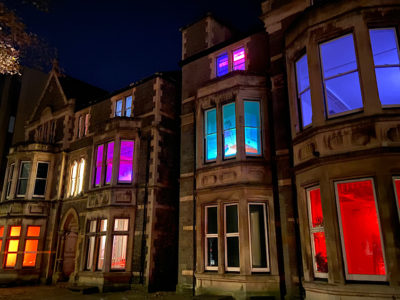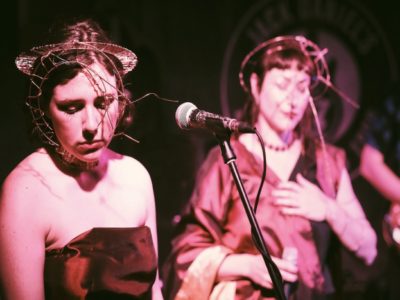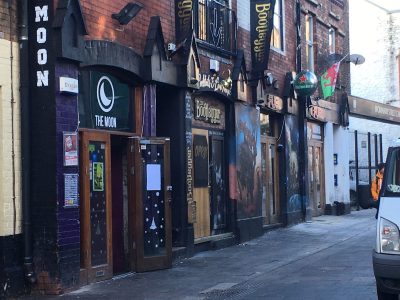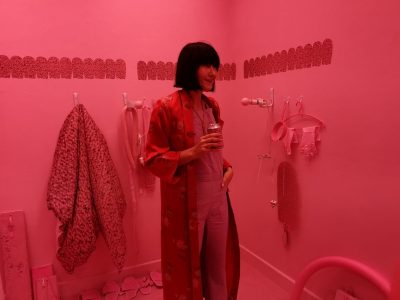The history
Sound art has been a part of contemporary art for around a century, coming out of the Dadaist and Futurist Movements sound was used for the first time as a vehicle for presenting ideas. Just as video art has its roots in visual art rather than cinema, sound art is also created by artists experimenting with sound rather than a form of experimental music.
Artist and curator of GMP Richard Higlett explains the origins of sound art as, “Someone in the 1920s’ had an idea for an artwork that could best be achieved through sound. Why paint a sound when one can be heard?”
The Witching Hour is important as it is the start of the ‘voice’ of sound art in Cardiff, a form of art almost completely overlooked so far. Apart from, I’m informed, an attempted dog choir which Richard described as “An act of folly.”
The Witching Hour is an exhibition of sound art at the Goat Major Projects studio in Canton, the sounds featured were gathered from Welsh artists.
The exhibition involves 14 pieces of sound presented in a sonic lounge; the space has a clock that is designed to dislocate those entering from the outside world, as it only tells the time from midnight to one in the morning. The Witching Hour will look at the ability of sound to create an uncanny sense of physical presence in the imagination.
The 14 art pieces will cover a wide range of sounds, according to the curator of GMP Richard Higlett they include, “disembodied voices, summoning of spirits, recordings of mythical creatures and sound abstracted from recordings of the human.”
View Goat Major Projects in a larger map
The history
Sound art has been a part of contemporary art for around a century, coming out of the Dadaist and Futurist Movements sound was used for the first time as a vehicle for presenting ideas. Just as video art has its roots in visual art rather than cinema, sound art is also created by artists experimenting with sound rather than a form of experimental music.
Artist and curator of GMP Richard Higlett explains the origins of sound art as, “Someone in the 1920s’ had an idea for an artwork that could best be achieved through sound. Why paint a sound when one can be heard?”
The Witching Hour is important as it is the start of the ‘voice’ of sound art in Cardiff, a form of art almost completely overlooked so far. Apart from, I’m informed, an attempted dog choir which Richard described as “An act of folly.”




